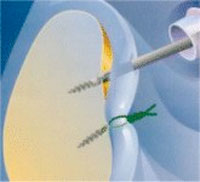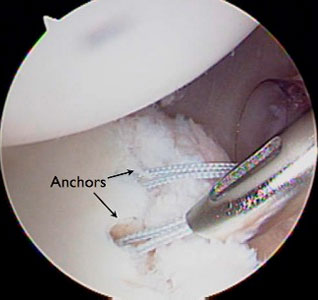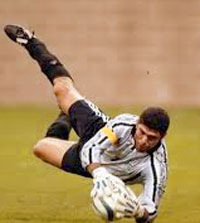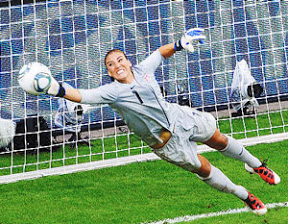This past Sunday, people from across the country and around the world witnessed one of the greatest come-from-behind victories in all of sports. Truly, the United States stole a victory against all odds. What many don’t know is the battles these women have overcome away from the field. Six of the twenty-one players on the roster have come back from ACL injuries with Megan Rapinoe serving up the game-tying assist with a left leg that has been reconstructed twice. Abby Wambach’s amazing last minute header would not have been possible without countless hours of work to return from a broken leg. These players’ ascension to the top is not merely by soccer talent alone; certainly there are many talented players in the United States. They made the choice to push onward when others decided the path would be too difficult, too uncomfortable, too risky or too much work. Their relentless pursuit of excellence in the face of adversity leave them standing before an opportunity labeled as World Champion.
One player who has battled adversity both on and off the field is goalkeeper Hope Solo. Many know about her very public disagreement with former US coach Greg Ryan four years ago resulting in an early departure back to the United States. After four years of regaining the respect of her teammates both on and off the field, much of the success of this United States team rides on Hope’s shoulders and specifically her right shoulder; a reconstructed right shoulder that members of her sports medicine team have labeled as one of the worst they have seen in an athlete seeking to return to play. New Orleans Saints QB Drew Brees is the only athlete that I am aware of that had a comparable injury and returned to play at an elite level successfully.

360 Degrees
According
to public reports and interviews, Hope Solo had a 360 degree tear of
her labrum which is the ring of cartilage that sits on top of the
glenoid of the scapula. If you think of the shoulder as a golf ball
sitting on a tee, the labrum helps deepen the “tee” to allow for more
stability of the joint. Many labral tears are identified by numbers on a
clock such as a “10-2 o’clock” tear. A full 360 degrees is rare.
In addition, reports state that Solo had a detached biceps tendon which attaches to the labrum, loss of articular cartilage which is the shiny protective covering of the bone, and three pieces of fragmented bone which may be due ligaments avulsing from the humerus (arm bone / “golf ball”) or glenoid. No information found on damage to her rotator cuff which are 4 tiny muscles that help keep the humerus on the glenoid (tee) along with providing the ability to rotate and lift the arm.

10 Anchors
Dr. James Andrews,
the renowned sports orthopedist out of Birmingham, Alabama performed
the surgery on Solo which involved the following published information:
Suturing the labrum back to the bone by means of 10 anchors positioned
around the “clock.” Holes are drilled into the glenoid and the labrum is
sutured to the screws. Drew Brees had 12 anchors in his surgery, most
run-of-the-mill labral repairs average 2-3.
A microfracture procedure which involves poking holes into the
surface of the bone to promote bleeding in hopes of regeneration of the
articular cartilage/protective covering of the bone.
Probable reattachment of the biceps tendon to the labrum via more suturing.
Unclear on treatment for bone fragments but most lesions are repaired with more anchors and suturing.


Landing on your elbow is one sure way to shoulder problems.
Goalkeepers Abuse Their Shoulders
How did it get to this point? The majority of goalkeepers who go on to
play at professional and international levels will tell you they have
problems with their shoulders. I would classify a goalkeeper as an
overhead athlete as many aspects of the position require arms extended
above shoulder height in terms of diving, catching, parrying, and
throwing. The majority of overhead professional athletes have shoulder
pathology of varying degrees simply from the wear and tear caused by the
repetitive motion. In addition, falling on an outstretched arm while
diving, deflecting shots driven with pace with an arm away from the
body, and direct trauma to the shoulder from landing certainly
contribute to labrum issues.
Hope Solo admits she spent a long time ignoring the pain and playing through it until it got so bad she could no longer ignore it. My guess is she had partially torn the labrum long ago making the joint unstable. An unstable joint then allows bones to crash into one another and go places they really shouldn’t go which causes further injury. This is compounded by the trauma of continued goalkeeper training on a daily basis. Eventually, something had to give.

The Road to Germany
Rehab following shoulder surgery is known to be one of the most uncomfortable rehabs of any joint in the body. I have had many patients tell me that the pain after shoulder surgery is some of the most intense pain they have ever experienced. In fact, many female patients tell me it ranks right up there with childbirth. It is reported that Hope got after the rehab the day immediately after surgery and spent up to 6 hours a day rehabbing back in her home state of Washington. A typically rehab schedule for an athlete such as Solo would include intensive range of motion and stretching work early on, followed by a rigorous strengthening program, and then retraining 19+ muscles acting on the shoulder joint to work in harmony with one another at a world class level as she got back to goalkeeper-specific activities. Almost nine months and probably close to 1000 hours of work later she is able to come up with a world class save with her outstretched right arm to deny Brazil’s third shooter in the Quarterfinals. It has been stated by media sources that Solo is getting a pain injection in right shoulder during the tournament and still has not recovered her full range of motion and she may never. Is it as good as new? No, nothing ever is after surgery. Effective? Yes
The Mental Edge
The personality traits that make Hope Solo the world’s best goalkeeper
also allowed her to overcome such a massive injury. Call it arrogance,
confidence, drive, or self-assurance but Solo has an inner fire that
fuels her to be the best. Like Wambach with her leg or Boxx, Rampone,
LePeilbet, Buehler, Rapinoe, and Mitts with their knees, they had every
reason to give up because the road became steeper and success less
likely. They decided to fight and push onward with their rehab with the
belief they could succeed and play at a World Cup level. This past
Sunday that same scenario of backs-against-the wall and against-all-odds
played out on the field for 120+ minutes …and US players were prepared
for it almost like they had been through it before…because many of them
had.
“I was sitting at home, but I wasn’t sitting at home feeling sorry for myself,” Solo told the Seattle Times. “I locked in on my rehab. I committed myself to getting back in shape. I focused everything I had into it. That’s what kept me going. My whole life has been about beating the odds and I certainly wasn’t going to not give it my best chance at getting back at the World Cup.”
About the Author: Julie Eibensteiner PT, DPT, CSCS is a physical therapist and owner of Laurus Athletic Rehab and Performance LLC, an independently owned practice specializing in ACL rehab and prevention in competitive athletes. In addition to being a regular contributor to IMS on topics of sport injury and prevention, Eibensteiner holds a USSF A License, coaches a U18G MRL team for Eden Prairie Soccer Club, and assists with the Men’s and Women’s soccer programs at Macalester College.
To view other sports injury and rehab articles by Julie Eibensteiner click here.

 Clap
Clap